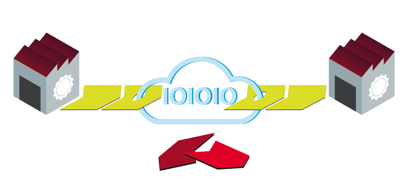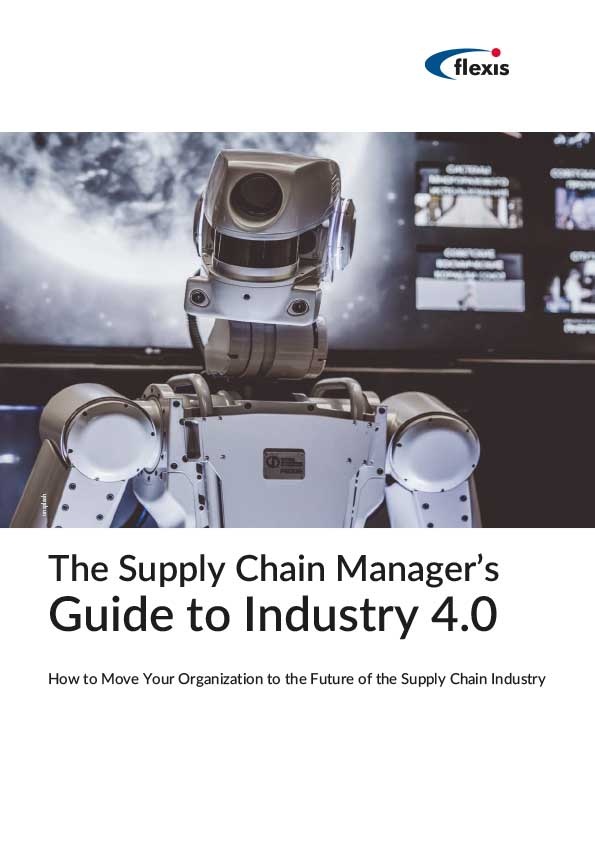5 Little Known Facts About Industry 4.0
Nick Ostdick - January 02, 2018

It’s undeniable: the visibility and proliferation of Industry 4.0 in today’s modern manufacturing landscape is quickly reaching its apex. More and more planners and managers have not only embraced Industry 4.0 as a critical driver of manufacturing and logistics efficiency, but successful companies have implemented Industry 4.0 as a holistic reinvention of planning and production processes, especially given the push for end-to-end digitization.

This is particularly true for variant-rich industries with complex partner networks and value chains where supplier and customer relations often engage in highly individualized, specified productions and delivery methods. Industry 4.0 provides companies the ability to respond to customer demands, supplier fluctuations, and constantly changing restraints and rules in complex planning and production programs. This also results in enhanced levels of end-to-end (E2E) visibility, which is a critical driver for companies in understanding their overall supply situation and leveraging lean manufacturing principles - both of which are key in reducing operational and production costs and increasing revenue.
But even with this basis of knowledge already well-established, there is still much to know, understand, and realize about the value of Industry 4.0. With this in mind, let’s examine 5 little known facts about Industry 4.0 and how manufacturing companies can leverage these facts into critical value-propositions in a global, competitive landscape.
Fact #1: Industry 4.0 is a valuable tool in product customization.
Commonly referred to as 3D printing, additive manufacturing is the process of building an object by depositing material in multiple layers. The use of additive manufacturing has certainly become trendy, but it has yet to reach its full potential. Industry 4.0 provides the technological infrastructure for manufacturing enterprises to use 3D technology at scale, producing smaller numbers of more customized products. Because additive technology can be deployed on demand, production time for customized products is significantly reduced, resulting in shorter overall lead times and more accurate delivery timetables. An important hallmark of an Industry 4.0 enterprise is the robust integration of additive manufacturing throughout the supply chain, not only to produce quality, individually-tailored products for end users, but also for the manufacturing of customized machine parts within the supply chain itself.
Fact #2: Industry 4.0 and advanced analytics walk hand-in-hand in creating planning and production efficiencies.
The implementation of advanced analytics consistently yields higher production quality, along with reduced downtime and improved customer experience — all contributing to a more specific, achievable bottom line. But these analytics are often disjointed or disparate, existing without a cohesive connection to an overarching structure or system of analysis and review. As the manufacturing world continues to evolve toward Industry 4.0, analytics systems are simultaneously evolving. The Industry 4.0 supply chain uses advanced analytics and Big Data to inform end-to-end (E2E) visibility. Up-to-the-minute data are available to support real-time decision-making and bring visibility to the entire supply chain, both within and without individual organizations. This not only results in a supply chain capable of greater responsiveness to disruption, but is also means manufacturing companies can gain greater insight into their overall supply situation.
Fact #3: Industry 4.0 helps drive, develop, and push postmodern ERP.
The postmodern ERP mindset has just begun to catch hold in the supply chain and manufacturing industry, yet Industry 4.0 pushes the boundaries of this cutting-edge approach even further. Industry 4.0 calls for a truly agile supply chain that integrates IT systems both vertically and horizontally. Using robust data-integration networks that span usually-disconnected departments like engineering and customer services, the Industry 4.0 company is much more cohesive and able to transcend communication and planning silos in a cross-organizational manner. And because these data systems can communicate beyond the boundaries of the company, they provide unprecedented integration, resulting in a much more agile supply chain.
Fact #4: The intersection of Industry 4.0 and the Internet of Things (IoT) creates value-driven propositions for planned production programs.
A holistic integration of Industry 4.0 requires the incorporation of networked machines and sensors throughout the supply chain. The Internet of Things (IoT) refers to computing technology embedded in devices, which can communicate with other devices and people through the internet. Currently IoT is most often found vertically within an organization; for instance, the supply chain's devices and sensors communicate with each other, providing useful but limited intelligence to the manufacturing control system. The next phase, however, incorporates the IoT to communicate across departments as well. The Industry 4.0 supply chain fully leverages the IoT for streamlined, agile operations with far greater visibility and transparency.
Fact #5: Industry 4.0 means a greater integration with Cloud technology.
The Industry 4.0 supply chain is a data-generation machine. It's constantly producing insights in real time, requiring incredible speed and precision, not to mention the capacity for instant access and E2E visibility. Those demands are best met in the Cloud. As Cloud technology continues to improve, the Industry 4.0 enterprise will increasingly deploy it for data management and functionality. Coupled with seemingly endless storage capacity and an ever-shortening reaction time, the Cloud offers the necessary agility for the supply chain of the next generation. Cloud technology, with its centralized data inputs and sources, allows for increased communication and collaboration across a number of critical stages: procurement, planning, production, and transportation.
LATEST POSTS
- Understand Why Production Planning Needs Specialized Solutions
- Understand Circular Economy in The Manufacturing Industry
- How Can Industry 4.0 IT Integration Be Achieved Smoothly?
- The Significance of Order Sequencing in Discrete Manufacturing
- How to improve your Supply Chain Management: The Power of Control Towers



